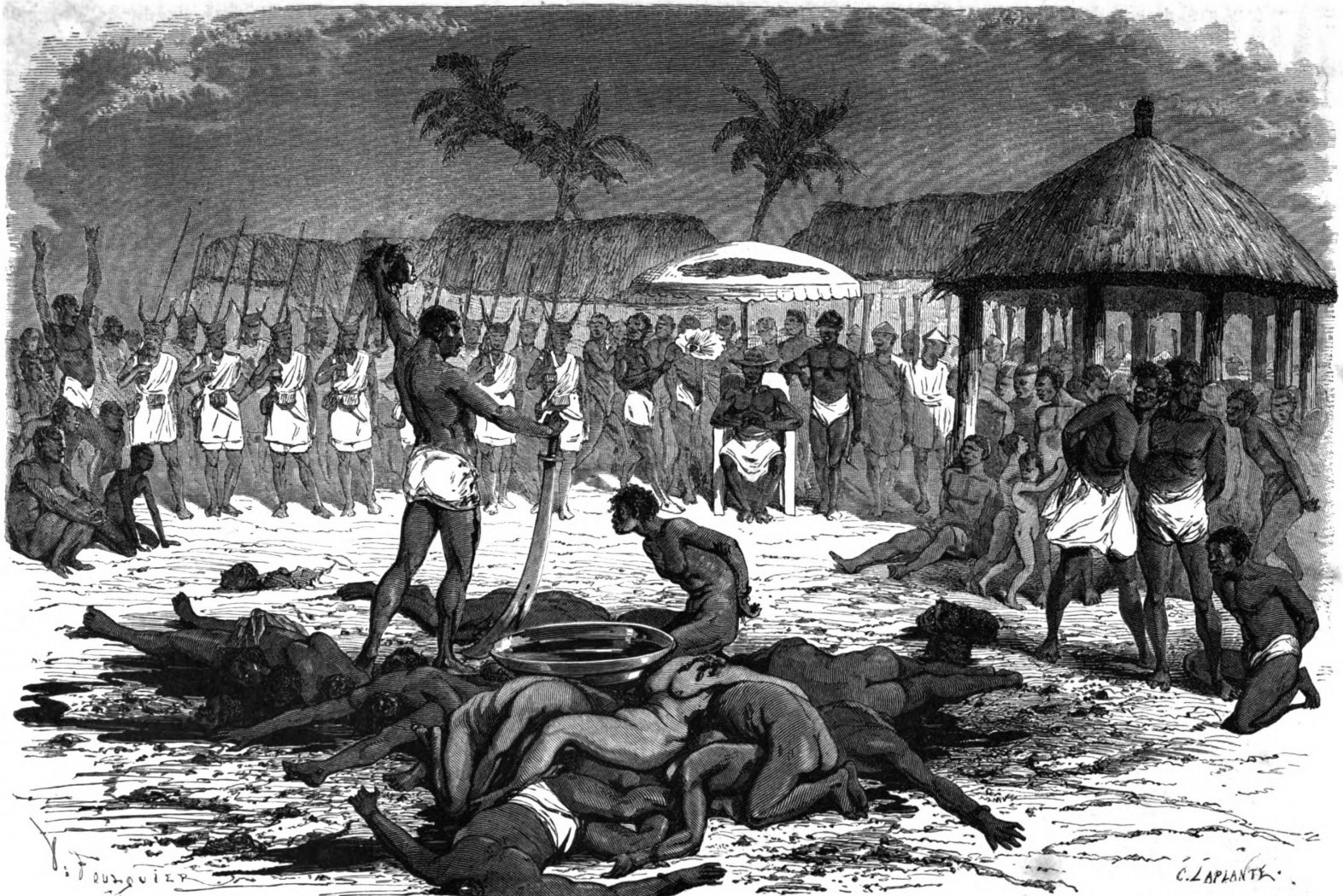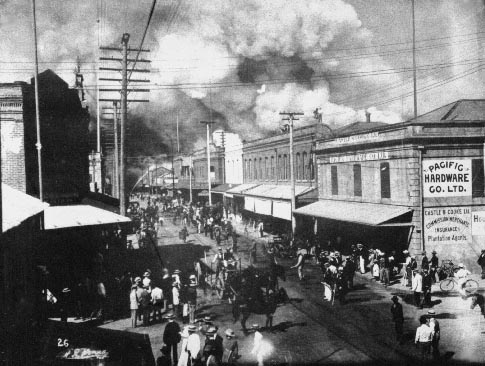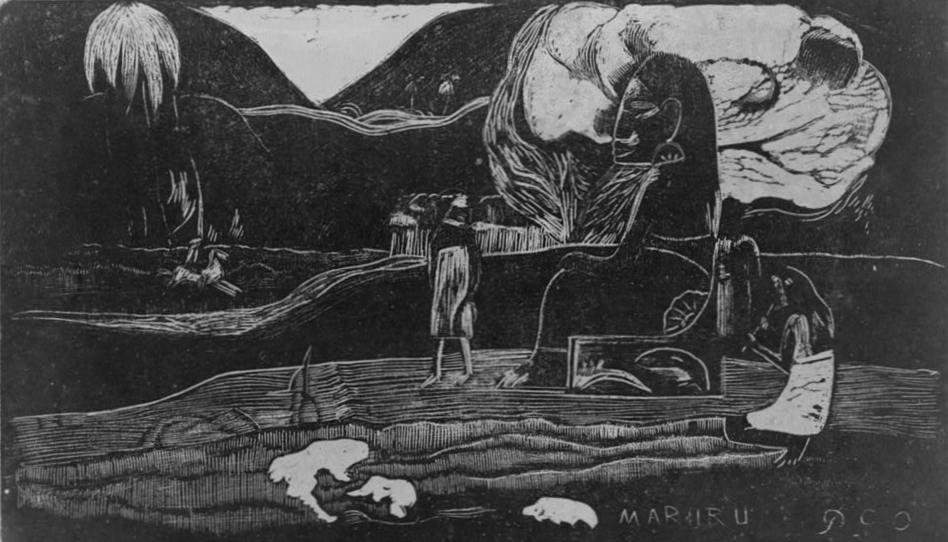|
Kū
In Hawaiian religion, Kū is one of the four great gods. The other three are Kanaloa, Kāne, and Lono. Some feathered god images or ''akua hulu manu'' are considered to represent Kū. Kū is worshiped under many names, including Kūkāilimoku, the "Snatcher of Land". Rituals for Kūkailimoku included human sacrifice, which was not part of the worship of other gods. Names of Kū Owing to the multiplicity inherent in Hawaiian concepts of deity, Kū may be invoked under many names such as the following, which reference subordinate manifestations of the god. Forest and rain * Ku-moku-haliʻi (Ku spreading over the land) * Ku-pulupulu (Ku of the undergrowth) * Ku-olono-wao (Ku of the deep forest) * Ku-holoholo-pali (Ku sliding down steps) * Ku-pepeiao-loa/-poko (Big and small-eared Ku) * Kupa-ai-keʻe (Adzing out the canoe) * Ku-mauna (Ku of the mountain) * Ku-ka-ohia-laka (Ku of the ohia-lehua tree) * Ku-ka-ieie (Ku of the wild pandanus vine) Husbandry and fishing * Ku-ka-o- ... [...More Info...] [...Related Items...] OR: [Wikipedia] [Google] [Baidu] |
Kamehameha I
Kamehameha I (; Kalani Paiʻea Wohi o Kaleikini Kealiʻikui Kamehameha o ʻIolani i Kaiwikapu kauʻi Ka Liholiho Kūnuiākea; to May 8 or 14, 1819), also known as Kamehameha the Great, was the conqueror and first ruler of the Kingdom of Hawaii. The state of Hawaii gave a statue of him to the National Statuary Hall Collection in Washington, D.C., as one of two statues it is entitled to install there. Birth and childhood Paternity and family history Kamehameha (known as Paiʻea at birth), was born to Kekuʻiapoiwa II, the niece of Alapainui, the usurping ruler of Hawaii Island who had killed the two legitimate heirs of Keaweʻīkekahialiʻiokamoku during civil war. By most accounts he was born in Ainakea, Kohala, Hawaii. His father was Keōua Kalanikupuapa'ikalaninui; however, Native Hawaiian historian Samuel Kamakau says that Maui monarch Kahekili II had ''hānai'' adopted (traditional, informal adoption) Kamehameha at birth, as was the custom of the time. Kamakau beli ... [...More Info...] [...Related Items...] OR: [Wikipedia] [Google] [Baidu] |
Kamakahonu
Kamakahonu, the residence of Kamehameha I, was located at the north end of Kailua Bay in Kailua-Kona on Hawaiʻi Island. History Kamehameha I (also known as Kamehameha the Great), who unified the Hawaiian Islands, lived out the last years of his life and instituted some of the most constructive measures of his reign (1810–1819) here. The residential compound included the personal shrine, Ahuena heiau, of the King. The name means "temple of the burning altar" in the Hawaiian language. His son, the crown prince Liholiho, also lived here, taking the name Kamehameha II. In December 1819, Kalanimoku led an army from here to put down the rebellion of his nephew Kekuaokalani, in the Kuamoo Battle, a few miles to the South. A battery of 18 cannons and large stone walls protected the fortress-like enclosure around several houses. Island Governor "John Adams" Kuakini lived at Kamakahonu. He governed the island when the king was away on state affairs to another island and later wh ... [...More Info...] [...Related Items...] OR: [Wikipedia] [Google] [Baidu] |
Kāne
In Hawaiian mythology, Kāne is considered the highest of the three major Hawaiian deities, along with Kū and Lono. He represented the god of procreation and was worshipped as ancestor of chiefs and commoners. Kāne is the creator and gives life associated with dawn, sun and sky. No human sacrifice or laborious ritual was needed in the worship of Kāne. In the Kumuhonua legend, he created Earth, bestowed upon it sea creatures, animals, plants, as well as created man and woman. Mythology The 1907 book '' Legends of Hawaii'' has the following account of creation involving Kāne. The author says that there are several versions of this story, probably due to waves of immigration from different areas of Polynesia Polynesia ( , ) is a subregion of Oceania, made up of more than 1,000 islands scattered over the central and southern Pacific Ocean. The indigenous people who inhabit the islands of Polynesia are called Polynesians. They have many things in ... at different t ... [...More Info...] [...Related Items...] OR: [Wikipedia] [Google] [Baidu] |
British Museum
The British Museum is a Museum, public museum dedicated to human history, art and culture located in the Bloomsbury area of London. Its permanent collection of eight million works is the largest in the world. It documents the story of human culture from its beginnings to the present.Among the national museums in London, sculpture and decorative art, decorative and applied art are in the Victoria and Albert Museum; the British Museum houses earlier art, non-Western art, prints and drawings. The National Gallery holds the national collection of Western European art to about 1900, while art of the 20th century on is at Tate Modern. Tate Britain holds British Art from 1500 onwards. Books, manuscripts and many works on paper are in the British Library. There are significant overlaps between the coverage of the various collections. Established in 1753, the British Museum was the first public national museum. In 2023, the museum received 5,820,860 visitors, 42% more than the previous y ... [...More Info...] [...Related Items...] OR: [Wikipedia] [Google] [Baidu] |
Human Sacrifice
Human sacrifice is the act of killing one or more humans as part of a ritual, which is usually intended to please or appease deity, gods, a human ruler, public or jurisdictional demands for justice by capital punishment, an authoritative/priestly figure, spirits of veneration of the dead, dead ancestors or as a retainer sacrifice, wherein a monarch's servants are killed in order for them to continue to serve their master in the next life. Closely related practices found in some tribe, tribal societies are human cannibalism, cannibalism and headhunting. Human sacrifice is also known as ritual murder. Human sacrifice was practiced in many human societies beginning in prehistoric times. By the Iron Age with the associated developments in religion (the Axial Age), human sacrifice was becoming less common throughout Africa, Europe, and Asia, and came to be looked down upon as barbarian, barbaric during classical antiquity. In the New World, Americas, however, human sacrifice cont ... [...More Info...] [...Related Items...] OR: [Wikipedia] [Google] [Baidu] |
Honolulu
Honolulu ( ; ) is the List of capitals in the United States, capital and most populous city of the U.S. state of Hawaii, located in the Pacific Ocean. It is the county seat of the Consolidated city-county, consolidated City and County of Honolulu County, Hawaii, Honolulu, situated along the southeast coast of the island of Oahu, Oʻahu, and is the westernmost and southernmost major U.S. city as well as westernmost and southernmost U.S. state capital. It is also a major hub for business, finance, hospitality, and military defense in both the state and Oceania. The city is characterized by a mix of various Asian culture, Asian, Western culture, Western, and Oceanian culture, Pacific cultures, reflected in its diverse demography, cuisine, and traditions. is Hawaiian language, Hawaiian for "sheltered harbor" or "calm port"; its old name, , roughly encompasses the area from Nuʻuanu Avenue to Alakea Street and from Hotel Street to Queen Street, which is the heart of the present dow ... [...More Info...] [...Related Items...] OR: [Wikipedia] [Google] [Baidu] |
Tūmatauenga
Tūmatauenga (''Tū of the angry face'') is the primary god () of war and human activities such as hunting, food cultivation, fishing, and cooking in Māori mythology. In creation stories, Tū suggests to kill his parents to allow light into the world. After they are instead separated. One of his brothers Tāwhirimātea was not happy with this and had declared war against his brothers and Tū was the only one who fought while the other brothers hid away avoiding the fight. Because of his brothers actions and having to fight Tāwhiri alone, he wars with his brothers and becomes the origin of humanity's activities, and the reasons for their behaviour when interacting with the creations of his brothers. As the god of war, all were dedicated to him and he was treated with the greatest respect and awe. Tūmatauenga inspires the New Zealand Army's Māori name: where all soldiers are deemed of the same ''iwi'' ("tribe") under the deity's patronage regardless of racial heritage. The ... [...More Info...] [...Related Items...] OR: [Wikipedia] [Google] [Baidu] |
Kualii
Chief Kūali'i was a Hawaiian aliʻi of Oʻahu, who reigned in the 1700s. He was from Kailua, and led wars against the chiefs of Waialua, Ewa, and Waianae. Kualii was the subject of a famous ''mele'' or chant of 600 lines, originally composed by two brothers, Kapaahulani and Kamaaulani, to gain favor with the chief. The chant was handed down orally over a 150-year period, and was collected by Judge Abraham Fornander. The chant was translated by Judge Lorrin Andrews Lorrin Andrews (April 29, 1795 – September 29, 1868) was an early American missionary to Hawaii and a judge. He opened the first post-secondary school for Hawaiians called Lahainaluna Seminary, prepared a Hawaiian dictionary and several works ... and Curtis J. Lyons and recorded by historian Samuel M. Kamakau. Some ancient historians claimed that he lived for 175 years. References {{Reflist Hawaiian chiefs ... [...More Info...] [...Related Items...] OR: [Wikipedia] [Google] [Baidu] |
Hina (goddess)
Hina is the name assigned to a number of Polynesian deities. The name Hina usually relates to a powerful female force (typically a goddess or queen) who has dominion over a specific entity. Some variations of the name Hina include Sina, Hanaiakamalama, and Ina. Even within a single culture, Hina could refer to multiple goddesses and the distinction between the different identities are not always clear. In Hawaiian mythology, the name is usually paired with words which explain or identify the goddess and her power such as Hina-puku-iʻa (Hina-gathering-seafood) the goddess of fishermen, and Hina-ʻopu-hala-koʻa who gave birth to all reef life. Hina continues to be a figure in many of the Polynesian religionsStokes, J. F. G., Heiau of Molokai. 1909 in MS. ''The Ancient Worship of the Hawaiian Islanders'', edited by W. T. Bringham. Archives, B.P. Bishop Museum, Honolulu. and her stories serve as traditions that unite Polynesia, specifically the Hawaiian Islands. New Zealand Among ... [...More Info...] [...Related Items...] OR: [Wikipedia] [Google] [Baidu] |
Lono
In Hawaiian religion, the god Lono is associated with fertility, agriculture, rainfall, music and peace. In one of the many Hawaiian stories of Lono, he is a fertility and music god who descended to Earth on a rainbow to marry Laka. In agricultural and planting traditions, Lono was identified with rain and food plants. He was one of the four gods (with Kū, Kāne, and Kāne's twin brother Kanaloa) who existed before the world was created. Lono was also the god of peace. In his honor, the great annual festival of the Makahiki was held. During this period (from October through February), war and unnecessary work was kapu (taboo). In Hawaiian weather terminology, the winter Kona storms that bring rain to leeward areas are associated with Lono. Lono brings on the rains and dispenses fertility, and as such was sometimes referred to as Lono-makua (Lono the Provider). Ceremonies went through a monthly and yearly cycle. For 8 months of the year, the luakini (temple) was dedicated t ... [...More Info...] [...Related Items...] OR: [Wikipedia] [Google] [Baidu] |
Deity
A deity or god is a supernatural being considered to be sacred and worthy of worship due to having authority over some aspect of the universe and/or life. The ''Oxford Dictionary of English'' defines ''deity'' as a God (male deity), god or goddess, or anything revered as divine. C. Scott Littleton defines a deity as "a being with powers greater than those of ordinary humans, but who interacts with humans, positively or negatively, in ways that carry humans to new Higher consciousness, levels of consciousness, beyond the grounded preoccupations of ordinary life". Religions can be categorized by how many deities they worship. Monotheism, Monotheistic religions accept only one deity (predominantly referred to as "God"), whereas Polytheism, polytheistic religions accept multiple deities. Henotheism, Henotheistic religions accept one God, supreme deity without denying other deities, considering them as aspects of the same divine principle. Nontheistic religions deny any supreme eter ... [...More Info...] [...Related Items...] OR: [Wikipedia] [Google] [Baidu] |
Edward Tregear
Edward Robert Tregear , Ordre des Palmes académiques (1 May 1846 – 28 October 1931) was a New Zealand public servant and scholar. He was an architect of New Zealand's advanced social reforms and progressive labour legislation during the 1890s. Biography He was born in Southampton, England, on 1 May 1846, the son of Captain William Henry Tregear, a descendant of an old Cornish family. Tregear was educated in private schools and trained as a civil engineer. He arrived in Auckland in June 1863 and took a position as a surveyor. This work brought him into close contact with the Māori, and he began to study their language and culture. Poverty forced Tregear to enlist in the Auckland Engineer Volunteers. He saw action against the Māori in the Tauranga area and was awarded the New Zealand War Medal. Between 1869 and 1873 he worked as a surveyor on the goldfields at Thames and Coromandel and on Māori lands near Tokoroa. His investments in gold mining and saw milling ventures pro ... [...More Info...] [...Related Items...] OR: [Wikipedia] [Google] [Baidu] |






